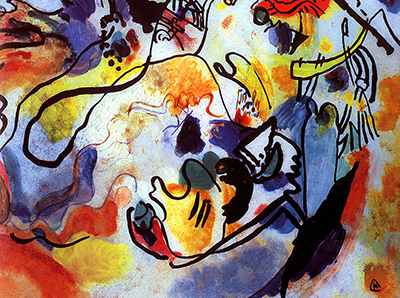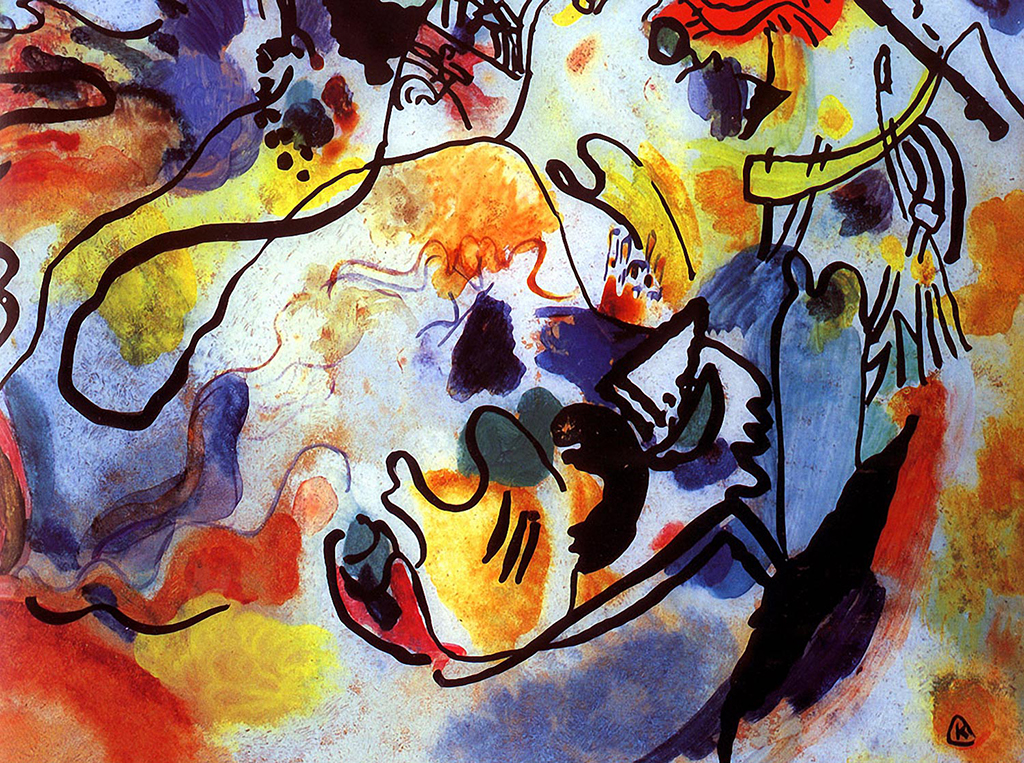Wassily Kandinsky produced several different interpretations around the theme of the Last Judgement between the years of 1912-1913. Some of these have since achieved extraordinary sales prices at auction, running into the ten of millions of dollars.
This particular version was from 1912 and now resides in a private collection. Kandinsky was in a particularly experimental phase of his career at this point and was also concentrating on the landscape genre as well. It is exciting to see someone so modern producing their take on a topic that has inspired so many artists from the past, most notably being Michelangelo's Last Judgement which can still be found today in the Vatican. Kandinsky takes a similar type of content but transforms it within his own style, with bright colours and reduced, abstract detail. His expressive nature makes it far harder to identify the different elements of his version, but the aesthetic beauty of this piece cannot be denied. It is not one of his more famous pieces, but still highly interesting and important as a result of its content and also in coming from this period of his career.
The artist uses tones of black paint which are tasked with creating form, striking over the regions of colour that themselves are bright and only approximately placed. His palette was consistent at this stage, with reds, yellows and blues appearing frequently. They are merged in ways here that was simply not seen later on in his career, where a greater precision would start to dominate his style. In this earlier piece we find a frenzy of activity, almost chaos, and perhaps that perfectly sums up the image of the Last Judgement as other artists had captured it within the Renaissance and Baroque eras. Despite his rejection of traditional art, Kandinsky was still knowledgeable about it and certainly respected it for many of its technical qualities, even though he wanted to work in a different way within his own career.
This is one of the few items from his career to now be found within a private collection, as the vast majority has been snapped up by major international art galleries and museums who will likely never put them up for sale. There have been the odd occasion when sales have come up, and the prices received have been extraordinary. Kandinsky remains a highly regarded and much loved painter whose career is understood right around the world, particularly for those with a real interest in the first half of the 20th century, which tends to be the case with most within the younger generations who are attracted to this bright and exciting method of delivery.





